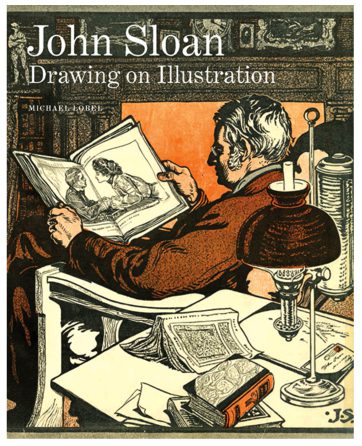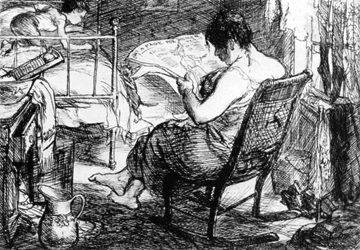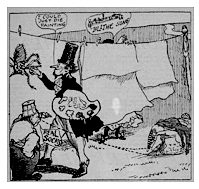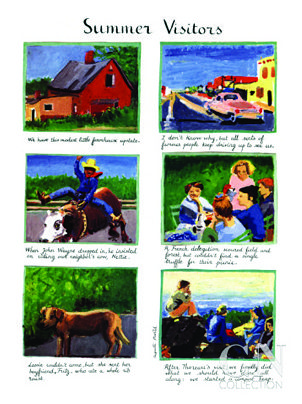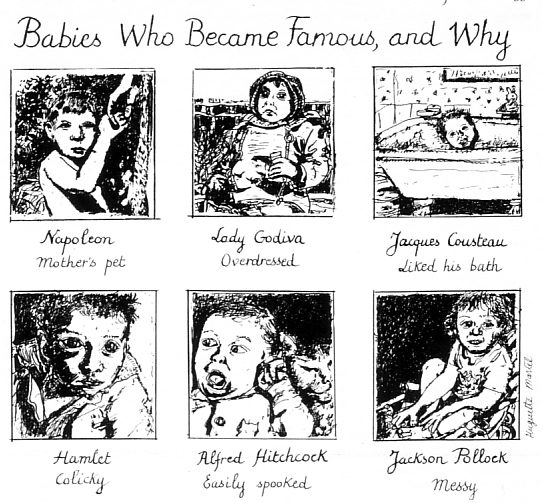The New York Comics & Picture-Story Symposium is a weekly forum for discussing the tradition and future of text/image work. Open to the public, it meets Tuesday nights from 7-9 p.m. EST in New York City. Presentations vary weekly and include everything from historical topics and technical demonstrations to creators presenting their work. Check out upcoming meetings here.
Michael Lobel on John Sloan
What is an illustration? What is fine art? What do they have to do with each other? The basic aim of Michael Lobel’s John Sloan: Drawing on Illustration (Yale University Press, 2014) and, indeed, his career as an art historian, is to demonstrate how close, even symbiotic, is the relationship between what we call fine art and what we call illustration. He sees John Sloan and Sloan’s contemporaries as a movement of artists whose fine art is celebrated, but whose basic development came to them in the popular culture as illustrators.
Born in 1871, Sloan established an early career as an illustrator in Philadelphia newspapers, most notably The Inquirer and The Philadelphia Press, and, after the turn of the century, followed the lead of his contemporaries William Glackens, Everett Shinn, and George Luks, who moved to New York with the aim of transforming themselves from illustrators to painters. There he and his group painted pictures of contemporary urban life, and became famous as the Ash Can school.
Two particular Sloan illustrations are revealing. “The Woman’s Page,” a Colliers’s magazine cover from 1905 which graces the cover of Lobel’s book, shows a bourgeois gentleman at home reading a magazine which contains, appropriately, a picture by Charles Dana Gibson, the most famous illustrator of the time, who himself left for France to study fine art and become a painter. The man in the picture is consuming popular imagery. An etching of Sloan’s from the same period gives a view of a decidedly working class woman also consuming popular culture in a magazine feature titled “The Well Dressed Woman,” which offers the fantasy of a high class life for the proletarian to enjoy, in which Sloan duplicates one of his own Philadelphia Press illustrations.
The most direct visual commentary that Sloan produced, and the most worthy of the category “comics,” was the newspaper series “Paul Pallette the Practical Paintist.” In each multi-panel episode, the dastardly painter and his sidekick perennially try to use his abiliies as an artist to make a living, not necessarily honestly. In one episode, Paletter paints a giant picture of an insect which is so lifelike that it scares the surrounding population. In every episode, the artist gets his comeuppance. Is Sloan depicting himself? These strips certainly satirize what Sloan had come to consider himself, an independent, itinerant artist.
The most popular works that Sloan did were word-puzzles, i.e., rebuses, for the Philadelphia Press. So successful were they that Sloan continued to do them and send them to the Press even after he moved to New York. Typical subjects like “What Musical Wind Instruments Are These?” would show a sequence of panels with pictures and letters from which the reader could figure out the answers printed in the paper the following week. An example: “sax-o-phone,” made up of a large letter “S” in a picture showing an ax and phone.
In 1906, Sloan produced such a word-puzzle for the Press titled “What Children’s Games Are Represented Here?” in which his mother anonymously appears in one panel. During the same period, 1906-10, he produced an etching of his mother which became one of his most outstanding pieces of fine art. He worked on them simultaneously, referring to one as he worked on the other. Here, fine art and illustration were useful to each other in actual practice, using the same skills. Sloan also used the composition from the painting “Whistlers Mother,” to work out the composition of the rebus panel. (Sloan’s mother, incidentally, lived to see the newspaper illustration, but not the etching which was still in progress when she died.)
Based on his study of Sloan’s art, Lobel has formulated an idea of what illustration is and how it has changed from a pan-historical category into a modern genre, not a thing but an activity. As an art, it is not autonomous or independent but rather defined by dialogue and collaborations, and it cuts across and encompasses existing visual mediums. Finally, Lobel concludes, It is worth noting that many fine artists start out intending to be illustrators in modern history, among them, quite surprisingly, Vincent Van Gogh (who in a letter to his brother Theo, confessed that he long to be a master illustrator like Howard Pyle), and even Marcel Duchamp, evidenced by his early “Femme Cocher” of 1907 and “Au Palais de Glace” of 1909.
***
Huguette Martel
Odd, wistful, beautiful, and witty: these words describe the work of Huguette Martel, the contemporary painter whose combination of texts and painted images make her a cartoonist of rare complexity and humor.
Huguette Martel was born in France in 1938, the daughter of Lithuanian Jews, and spent World War II in hiding with a French family while her father and other family members became victims of the Holocaust. She came to New York at age nineteen (actually, she turned nineteen on the boat coming over). Martel wrote poems as a child, liked American comics, and knew from a very early age that she would become an artist.
Despite English being her second language, Martel graduated from Cooper Union after attending at night for five years, and soon became a painter of large abstract expressionist paintings. As time went on, Martel began making figurative paintings whose subjects would inspire stories that she would paint directly as captions on the canvas. She has concentrated on combining painted images with text ever since.
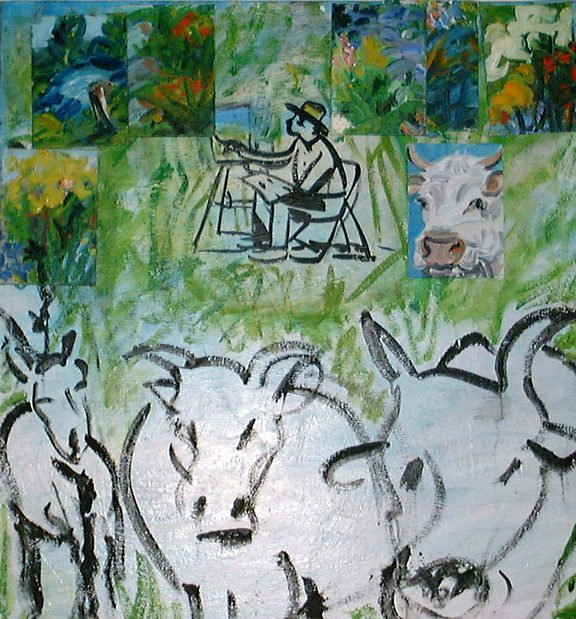
“I always wondered why I had this need to write stories to go with my paintings,” Martel has said. “I really don’t know, but one thing is clear: I cannot paint without knowing that a text will come out of them.” She leapt from the realm of fine art to cartooning, when, in 1990, she submitted several of her pieces to New Yorker cartoon editor Lee Lorenz, who—a rarity—bought them right off the bat. (“I thought that was normal,” Martel has confessed, not knowing how difficult it normally was to have gotten published there.) Since then, the New Yorker soon published her black-and-white as well as color pieces. Martel’s practice has remained to draw her pictures first and concoct the captions second, which the New Yorker editor thought was a very strange way to work.
Martel’s New Yorker cartoons, among them “Summer Visitors,” ” Blind Date [with Louis XIV],” “My Best Students Ever,” “Babies Who Became Famous and Why” and “If They Had Prozac in the 19th Century,” this last edited by Francoise Mouly, have an odd and whimsical humor to them, beautifully painted and witty. Her most recent project, titled “Adventures of a Would-be Filmmaker.” is pure fiction—Martel has no intention herself of becoming a filmmaker—and it’s hysterically funny, with Martel’s fictional filmmaker offering script ideas like “Eight Movie Trailers With an Animal Tree” set to the music of Charles Trent and Hector Berlioz. Martel is currently turning her attention to doing books.
***
Michael Lobel is Professor of Art History and Director of the MA Program in Modern and Contemporary Art, Criticism and Theory at Purchase College, State University of New York. His publications include Image Duplicator: Roy Lichtenstein and the Emergence of Pop Art (Yale University Press, 2002); James Rosenquist: Pop Art, Politics and History in the 1960s (University of California Press, 2009), and he has written numerous exhibition catalog essays and articles for Art Journal, Artforum, Parkett, and Art Bulletin.
[copied from the NY Comics & Picture-Story Symposium site:]Huguette Martel was born in France in 1938; the daughter of Lithuanian Jews, she spent World War II hiding with a peasant family. She’s been living in New York since she was 19. A graduate from Cooper Union, she started by doing large abstract-expressionist paintings. For the last 25 years, she has concentrated on narrative paintings: painted images combined with a painted texts on canvas. In the early 90s, the New Yorker magazine published a series of her cartoons and full-color pages. She has shown in several galleries; in 2007, she had a one-man show in at Congregation Beth Elohim in Brooklyn, NY. Lately, she’s gone from wall paintings to a smaller format designed for books.
Image Credits:
1) Michael Lobel, John Sloan, Drawing on Illustration, Yale University Press (2014). Image: John Sloan, Collier’s magazine cover, 1895
2) John Sloan, “The Well-Dressed Woman,” etching.
3) John Sloan, “Paul Pallette Painting,” Philadelphia Press, 1905
4) Huguette Martel, Summer Visitors
5) Huguette Martel
6) Huguette Martel, Babies Who Became Famous and Why
***
Mark Lerer holds a bachelor’s degree from Princeton University and an M.F.A. from the New York Academy of Art. His cartoon drawings have been published in The New York Post, and are regularly featured on Facebook.

